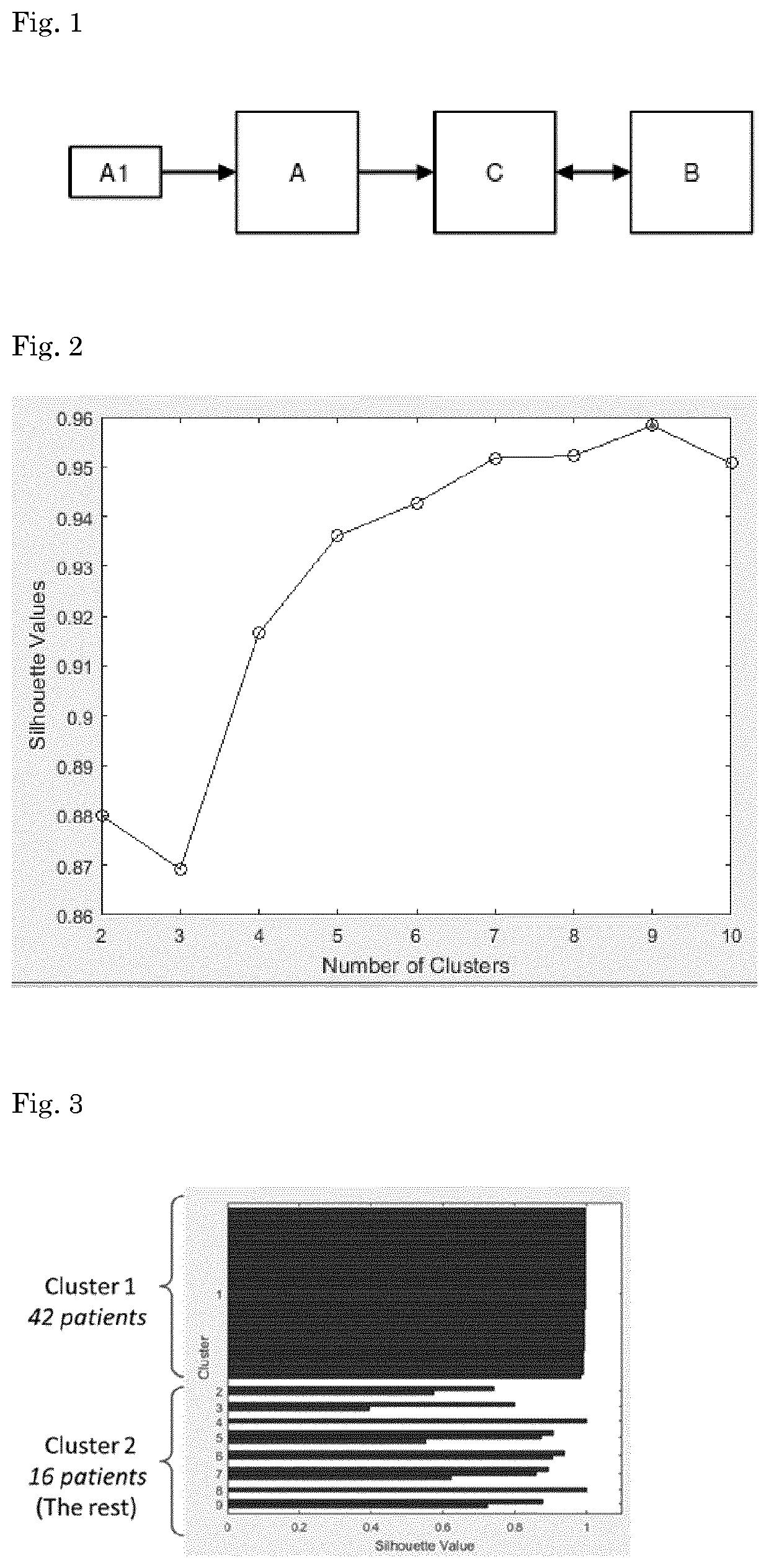Classification of periodontitis patients
a periodontitis patient and classification technology, applied in the field of oral care, can solve the problems of low therapeutic intervention rate, significant amount of untreated cases, and inability to adapt to chair-side applications,
- Summary
- Abstract
- Description
- Claims
- Application Information
AI Technical Summary
Benefits of technology
Problems solved by technology
Method used
Image
Examples
example
[0140]In a clinical study with 58 subjects, there were 31 patients diagnosed with mild periodontitis and 27 from advanced periodontitis. K-means clustering was used to cluster all subjects using HGF, MMP8 and MMP9. Note that k was varied from 2 to 10. For every k, the average silhouette value was computed over all 58 subjects.
[0141]The silhouette coefficient combines both cohesion and separation (ref. https: / / cs.fit.edu / ˜pkc / classes / ml-internet / silhouette.pdf). The following steps explain how to compute the silhouette coefficient for an individual point, a process that consists of the following three steps.
1. For the ith object, calculate its average distance to all other objects in its cluster. Call this value ai.
2. For the ith object and any cluster not containing the object, calculate the object's average distance to all the objects in the given cluster. Find the minimum such value with respect to all clusters; call this value bi.
3. For the ith object, the silhouette coefficient ...
PUM
| Property | Measurement | Unit |
|---|---|---|
| pH | aaaaa | aaaaa |
| pH | aaaaa | aaaaa |
| concentrations | aaaaa | aaaaa |
Abstract
Description
Claims
Application Information
 Login to View More
Login to View More - R&D
- Intellectual Property
- Life Sciences
- Materials
- Tech Scout
- Unparalleled Data Quality
- Higher Quality Content
- 60% Fewer Hallucinations
Browse by: Latest US Patents, China's latest patents, Technical Efficacy Thesaurus, Application Domain, Technology Topic, Popular Technical Reports.
© 2025 PatSnap. All rights reserved.Legal|Privacy policy|Modern Slavery Act Transparency Statement|Sitemap|About US| Contact US: help@patsnap.com


